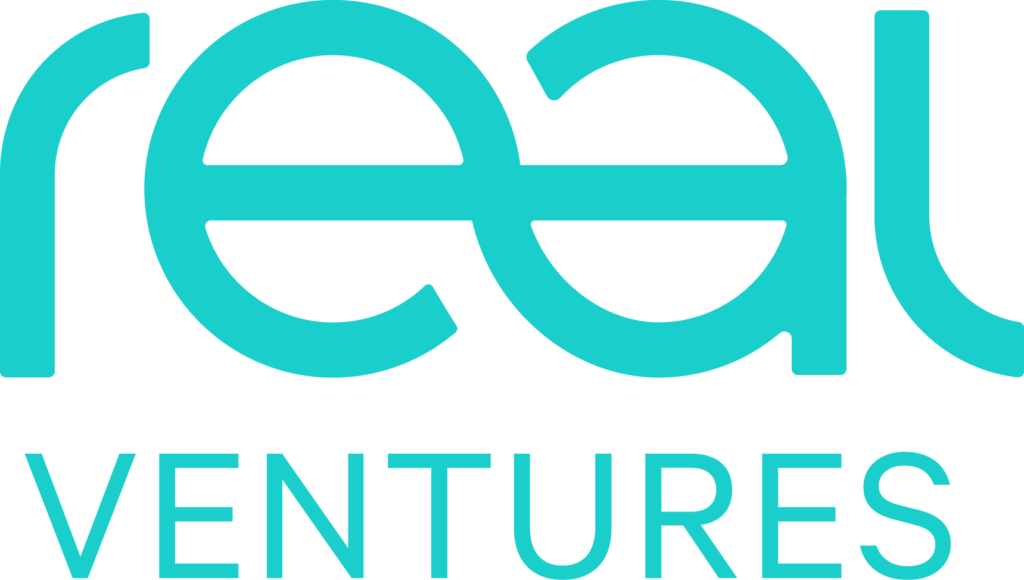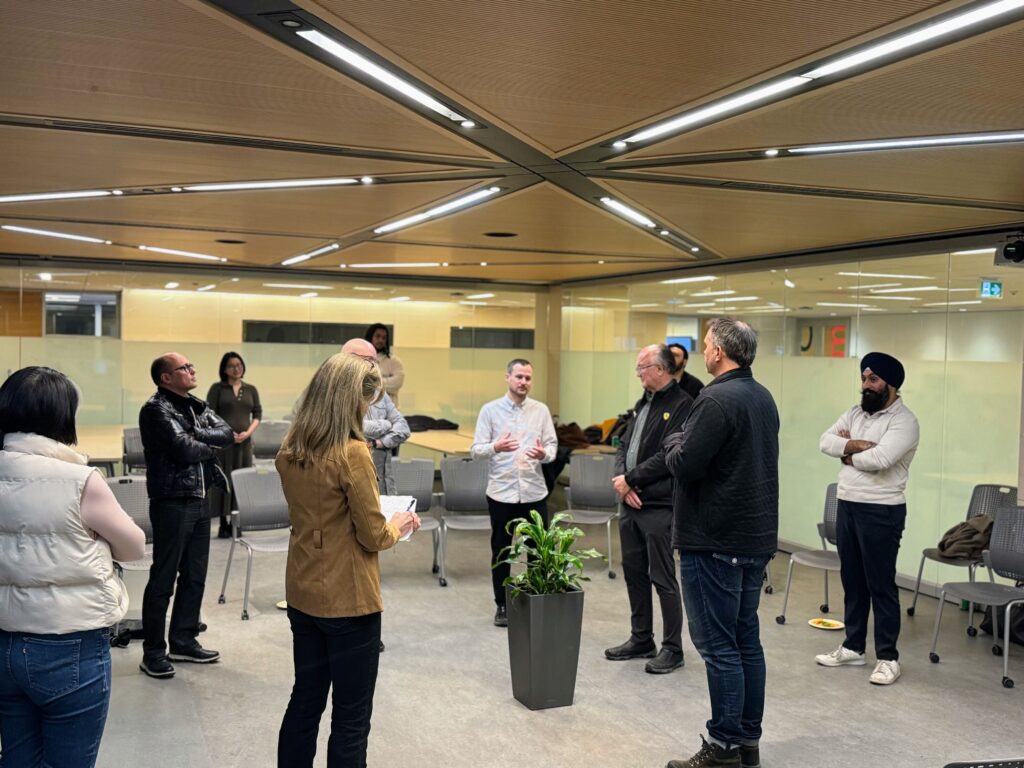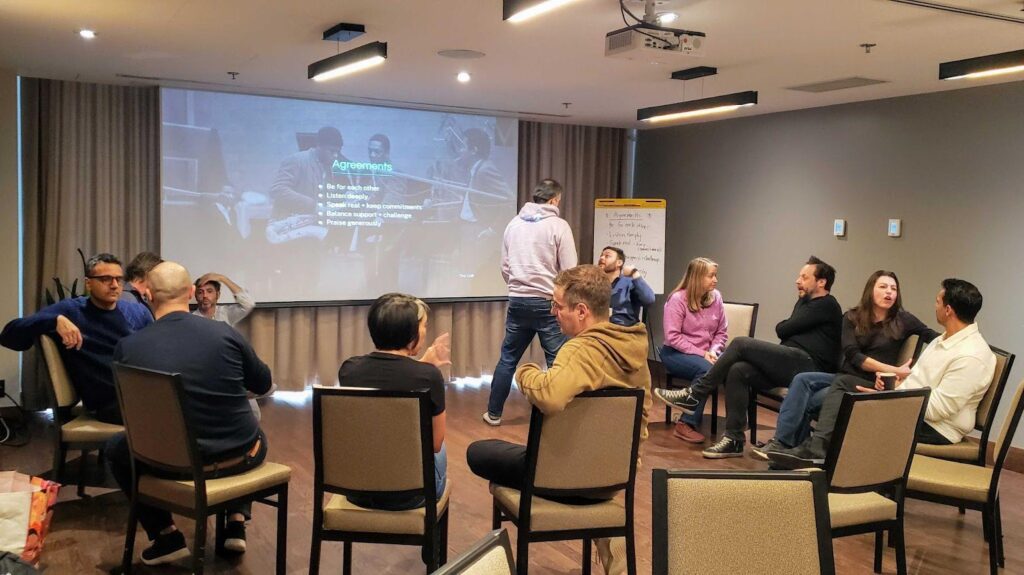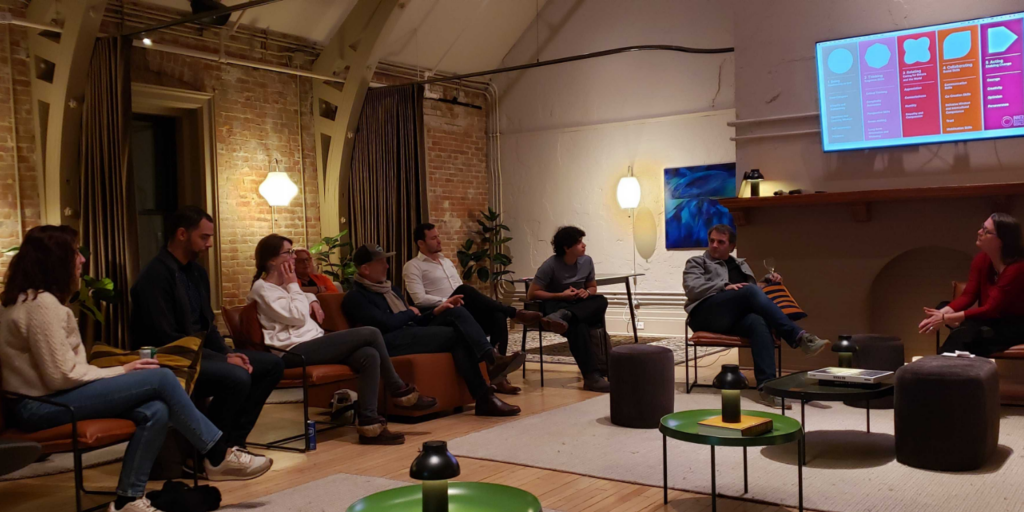Insights from Humera Malik on what to look for when evaluating potential investors and actions CEOs can take to foster founder/investor relationships built on transparency and trust.
Choosing to partner with a VC investor goes far beyond term sheet negotiations and the capital they provide your business. When you decide to partner with an investor, that’s just what you’re getting — a new business partner. Like most relationships, successful founder/investor partnerships are built on a foundation of transparency and trust reinforced through open, honest, and frequent communication. You may be thinking that’s great in theory, but what does that look like in practice?
To answer this question, we meet with Humera Malik, CEO of Canvass AI, which enables industrial manufacturers to increase efficiencies and accelerate sustainability. Since its launch in 2016, the Canvass AI Platform has been empowering industrial engineers to use AI in their day-to-day operations to predict failures, optimize processes and reduce carbon emissions. Canvass AI counts some of the world’s leading industrial companies among its clients.
Real Ventures led Canvass AI’s seed round. Canvass AI has subsequently raised three additional rounds, including funding from Gradient (Google’s AI fund) and Yamaha Motor Ventures. Real Ventures has also participated in each subsequent round.
Thanks for meeting with us today Humera! I’d like to kick things off by asking you to tell us about Canvass AI, its mission, and what led you to start the company?
Canvass AI is on a mission to transform the way industrials use data to increase global productivity and protect the environment.
In the past, as I was working with industrial engineers, I increasingly saw that industrial and manufacturing companies were spending millions of dollars on technologies to collect operational data, but the industrial engineers were not able to extract meaningful value from it.
This gulf between data and insights hinders their ability to improve productivity and forces them to rely on third parties and consultants to provide actionable insights. It was clear that a better way to connect domain experts in the industrial, manufacturing, and oil and gas sectors with their data was essential to optimize processes, meet sustainability targets, and resolve issues more efficiently and cost-effectively.
This is how Canvass AI came about. We created a platform powered by AI that enables industrial engineers to work with their own data, drive value, and create real impact, like optimizing energy usage and processes, reducing asset failure, and lowering greenhouse gas emissions. We’ve taken the complexity out of AI, so engineers don’t have to rely on data scientists to get value from their data.
What qualities were you looking for in potential investors when you first started fundraising?
Trust was undoubtedly the most important factor during my first fundraising experience.
When I first started fundraising, I knew I needed to work with early-stage investors but didn’t necessarily have all the criteria defined in my mind. We had the chance to participate in CDL (Creative Destruction Lab), a leading accelerator program, which introduced us to some of the top VCs from Canada and the US. By participating in this program, I started to learn and further build out my criteria for investors. I realized that I was looking for a firm that:
- invested in early-stage tech businesses;
- understood how to grow an enterprise B2B business;
- had invested in other AI companies;
- had a strong track record of adding value and being a trusted partner to founders.
While financing terms, AI expertise, and track records were all important factors in our decision-making process, ultimately, it came down to trust. An interesting fact about this first fundraise is that we had a couple of term sheets in our hands when I was introduced to Real Ventures. When I met Janet and the Real Ventures team I had an ‘aha’ moment. I was excited to discover that I could answer a resounding ‘yes’ to the following questions: “Can I work with this person?”; “Do I feel safe sharing ideas with this person?”; “Are we starting on the right footing?”.
These questions are important in all fundraising rounds but are particularly important in early-stage rounds because you need to have an open and trusting relationship to bounce ideas around and discuss the big decisions that you need to make. With all this in mind, I was able to pick Real Ventures term sheet for the first funding round and the rest is history!
Since the first round, one additional quality in investors that I’ve come to appreciate and now look for is: Does the investor have a belief and passion for supporting founders? Janet has this in spades — and it never fails to impress me how she champions founders’ successes and how well supported we feel because she always has our back.
To date, you’ve raised three additional rounds after Real Ventures led your seed round. Other lead investors were Gradient Ventures and Yamaha Motor Ventures. When meeting with the investors who participated in these fundraising rounds, what convinced you they were a good fit for you and your business?
As we conducted additional fundraising rounds, it was important to take a step back and understand the right mix of investors we needed for each stage of the business. Firstly, they needed to understand the growing pains of a tech scale-up through first-hand experience. Secondly, they needed to understand our technology stack and our market. For example, as a company building an AI platform, partnering with Gradient Ventures early on was tremendously helpful. They know how to commercialize AI and build large-scale systems. This knowledge was crucial in helping us scale rapidly.
During our Series A, we were scaling up and commercializing. Partnering with Yamaha was a logical choice because they come from the enterprise sector, have experience working within the industrial industry, and possess a deep understanding of our customers’ needs. Additionally, we knew we wanted to expand globally and saw that their experience and network would be a huge asset to the company.
Finally, just as I’d done in earlier funding rounds, I did reference checks on each investor with founders they had already worked with to understand what kind of partnership we could expect. In all cases, the feedback I received convinced me these were the right investors for Canvass AI.
What actions do you take as a founder and CEO to build and maintain trust with your investors?
Planning regular communications that go well beyond the quarterly boardroom meetings and developing an in-depth understanding of the needs of each investor goes a long way in building trust. You shouldn’t be reaching out to them only when you need them, but rather maintaining a continuous, fluid conversation about the business and its progress.
Like all people, each investor has his or her preferred way of working together. Some like to spend more time together, others want more detailed financial updates, and some want to be more engaged and proactive. It’s up to me, as the CEO, to understand each person’s preference, set expectations, and deliver on them.
Board meetings are critical opportunities to share updates with your investors and plan high-value discussions. How do you prepare for board meetings? What does the agenda look like, and what discussion topics do you prioritize?
I have learnt that the board meetings are not a place for updates but rather an opportunity for the management team to engage the board in meaningful discussions about the business. Board meetings are an opportunity to have a focused, strategic discussion with your board and if you plan and manage them appropriately, they can add tremendous value to your business. To ensure this, I send the financials and a traditional board deck to board members well ahead of the meeting and attached a board letter. The board letter provides the context of the financials so that the board can review this ahead of the meeting. This exercise of writing the board letter gives me a chance to share my thoughts, inform board members about the topics I want to cover in the meeting and allow them to come prepared for an active discussion on key business issues.
By doing this preparation, it enables us to maximize the time during the meeting to have focused discussions on projects, challenges and opportunities, and review the overall strategy and performance of the business.
What are some of the most helpful actions investors have taken to help you and your team to successfully problem-solve and scale your business?
Network is key and the facilitation of strategic introductions has been invaluable. Janet has been really helpful in opening doors that helped us accelerate our growth strategy. This has been important for us as we looked for potential investors and customers or needed to recruit new leaders to the executive team. By fostering a transparent and open relationship, Janet has an in-depth understanding of our business, which helps her make important connections and provide strategic advice to the business.
It’s easy for everyone to get along when everything is going according to plan, but we all know that’s not the reality of scaling a business. How do you approach having difficult conversations with your investors?
Tough conversations are hard no matter how well prepared you are for them. My approach is simple; make sure there are no surprises! When engaging in a difficult conversation, just be honest. This means not trying to make a bad situation sound better than it is or hiding any details.
This is, of course, easier said than done. Thankfully, I’ve assembled an experienced board where any challenge I’ve encountered hasn’t been the first time they have confronted it. Most experienced investors have seen it all, and what I’m experiencing is likely just a different variation of the same problem. Keeping this in mind makes it much easier to initiate tough conversations.
When meeting with new potential investors, are there any red flags that would immediately cause you to decline an investment?
Rather than ‘red flags’, I keep my earlier criteria at the top of my mind when meeting new potential investors. In addition, I see each investor as being a piece of the puzzle, with each bringing unique value to the table. So, when I meet with new potential investors, I assess how they would support the company’s next phase of growth and what distinct value they would bring to the board.
If you could only share one piece of advice to new or aspiring founders about building successful founder/investor relations, what would it be?
Doing your homework and evaluating potential investors before signing a term sheet is critical. You are entering into a partnership that will likely last a decade or more. Do reference checks, find out what investors are like in good times and bad, and have multiple conversations with them; ask how they work with their companies and how they like to be kept up to date. The more you know, the better equipped you will be to select a compatible partner. Putting in the hard work really pays dividends in the success of your partnerships with investors.
And finally, there isn’t a magic formula for assessing investors. As I’ve said before, trust is important when building investor partnerships — but also trust yourself and your instincts.
**********
For more on our thoughts about how to scale your startup, sign up for our newsletter and follow us on Twitter, LinkedIn, and Facebook.




